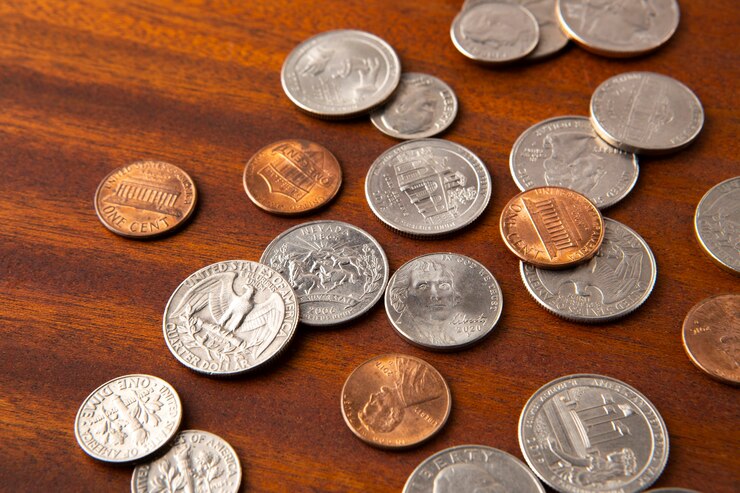Investing in silver has long been a popular choice for those looking to diversify their portfolios, hedge against inflation, or simply acquire a tangible asset. However, when it comes to silver coins, investors are often faced with a choice: should they invest in bullion or numismatic coins? Both types of coins offer unique benefits, but understanding their differences is crucial for making an informed decision. In this article, we’ll explore the key distinctions between bullion and numismatic silver coins, providing valuable insights for anyone looking to buy silver coins.
1. What Are Bullion Silver Coins?
Bullion silver coins are primarily valued based on their silver content. These coins are typically minted by government or private entities and are designed to serve as a way to invest in silver. The value of a bullion coin is closely tied to the current market price of silver, also known as the spot price. Because of this, the value of bullion silver coins fluctuates with the price of silver in the commodities market.
Common examples of bullion silver coins include the American Silver Eagle, Canadian Silver Maple Leaf, and the Austrian Silver Philharmonic. These coins are usually produced in large quantities, and their designs remain consistent from year to year, with the primary focus being on their silver content rather than rarity or historical significance.
For investors looking to buy silver coins primarily for their intrinsic metal value, bullion coins are an excellent choice. They offer a straightforward and cost-effective way to invest in silver, with their value being almost entirely dependent on the current price of silver.
2. What Are Numismatic Silver Coins?
Numismatic silver coins, on the other hand, are valued not just for their silver content but also for their rarity, historical significance, and condition. These coins are often older, limited in mintage, or associated with a particular historical event or era. The value of a numismatic coin can far exceed its intrinsic silver value, as collectors are willing to pay a premium for coins that are rare or in excellent condition.
Examples of numismatic silver coins include Morgan Silver Dollars, Peace Silver Dollars, and various commemorative coins. The value of these coins is influenced by factors such as their age, mint mark, condition (often graded by a professional grading service), and historical importance.
For those looking to buy silver coins as a collectible or as an investment with the potential for significant appreciation, numismatic coins offer a different kind of opportunity. However, the market for numismatic coins is more complex and requires a deeper understanding of the factors that influence their value.
3. Key Differences Between Bullion and Numismatic Silver Coins
- Value Determination
The most fundamental difference between bullion and numismatic silver coins lies in how their value is determined. Bullion coins derive their value from the metal content, meaning their worth is directly linked to the spot price of silver. If the price of silver increases, the value of bullion coins typically rises in tandem.
In contrast, the value of numismatic coins is determined by a combination of factors, including rarity, demand, historical significance, and condition. For example, a numismatic coin might be worth many times its silver content because it is rare or in particularly good condition. This makes numismatic coins more volatile and subject to fluctuations based on collector demand rather than just the price of silver.
- Market Liquidity
When it comes to liquidity, bullion coins are generally easier to buy and sell. Since their value is based on the silver content, they are more universally recognized and traded. Investors can quickly sell bullion coins to dealers or other investors at a price close to the current spot price of silver.
Numismatic coins, however, may take longer to sell, as their value is more subjective and depends on finding a buyer who appreciates their numismatic qualities. This can make numismatic coins less liquid than bullion coins, especially if the market for a particular coin is limited.
- Investment Purpose
Investors who buy silver coins as a hedge against economic uncertainty, inflation, or currency devaluation typically gravitate towards bullion coins. The rationale is simple: bullion coins offer a direct and pure play on the price of silver, making them a straightforward way to gain exposure to this precious metal.
On the other hand, numismatic coins are often purchased by collectors or investors looking for coins with the potential for significant appreciation beyond their silver content. These coins are seen as both a store of value and a potential asset for capital growth, particularly if they are rare or historically significant.
- Risk Factors
Investing in bullion coins carries the risk associated with fluctuations in the price of silver. If the silver market declines, so too does the value of bullion coins. However, this risk is relatively straightforward and tied to broader market forces.
Numismatic coins, while offering the potential for greater returns, come with higher risk due to their subjective valuation. Factors such as market demand, the popularity of a particular coin, and changes in collector preferences can all impact the value of numismatic coins. Additionally, numismatic coins require a greater level of knowledge and expertise to evaluate, making them riskier for inexperienced investors.
4. Which Should You Choose?
The decision to invest in bullion versus numismatic silver coins depends largely on your investment goals and risk tolerance.
- Bullion Coins: If your primary goal is to invest in silver as a hedge against inflation or economic uncertainty, bullion coins are likely the better choice. They offer a direct correlation with the price of silver and are easier to buy and sell.
- Numismatic Coins: If you are interested in coin collecting or are looking for an investment that combines historical interest with the potential for appreciation, numismatic coins may be more appealing. However, be prepared to spend more time researching and understanding the market to make informed decisions.
For those new to investing in silver, starting with bullion coins might be the safer and more straightforward option. As you become more knowledgeable and comfortable with the market, you can explore the world of numismatic coins if they align with your interests and investment strategy.
Conclusion
Understanding the difference between bullion and numismatic silver coins is essential for anyone looking to buy silver coins as part of their investment strategy. While both types of coins offer unique benefits, they cater to different investment goals. Bullion coins provide a direct and simple way to invest in silver, making them ideal for those looking to hedge against economic uncertainty. Numismatic coins, on the other hand, offer the potential for higher returns through rarity and historical significance, appealing to collectors and investors with a passion for history and numismatics.
By carefully considering your investment goals, risk tolerance, and the amount of time you are willing to dedicate to research, you can make an informed decision about which type of silver coin is right for you. Whether you choose bullion or numismatic coins, investing in silver offers a tangible and historically proven way to preserve and grow your wealth.





